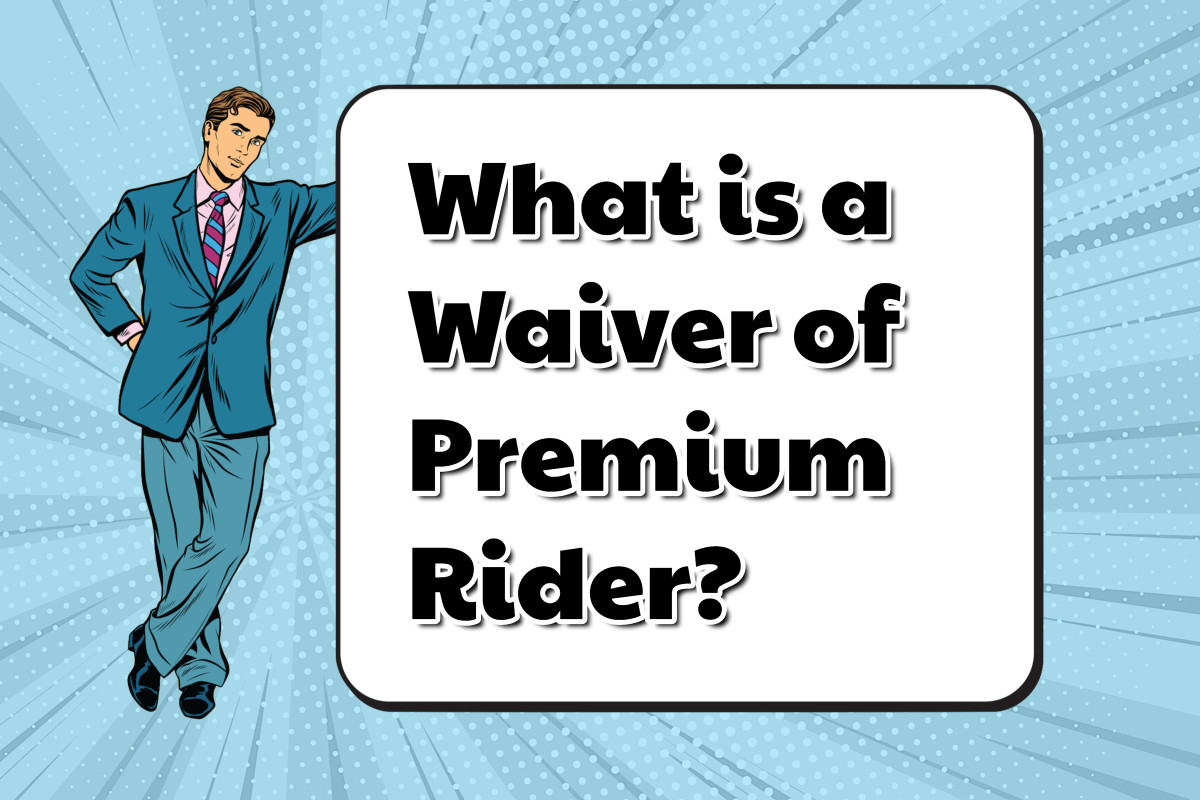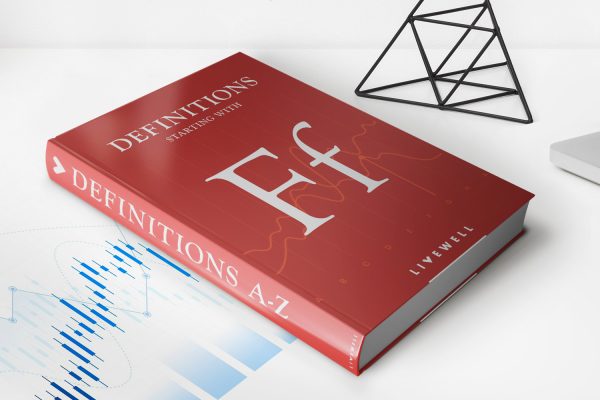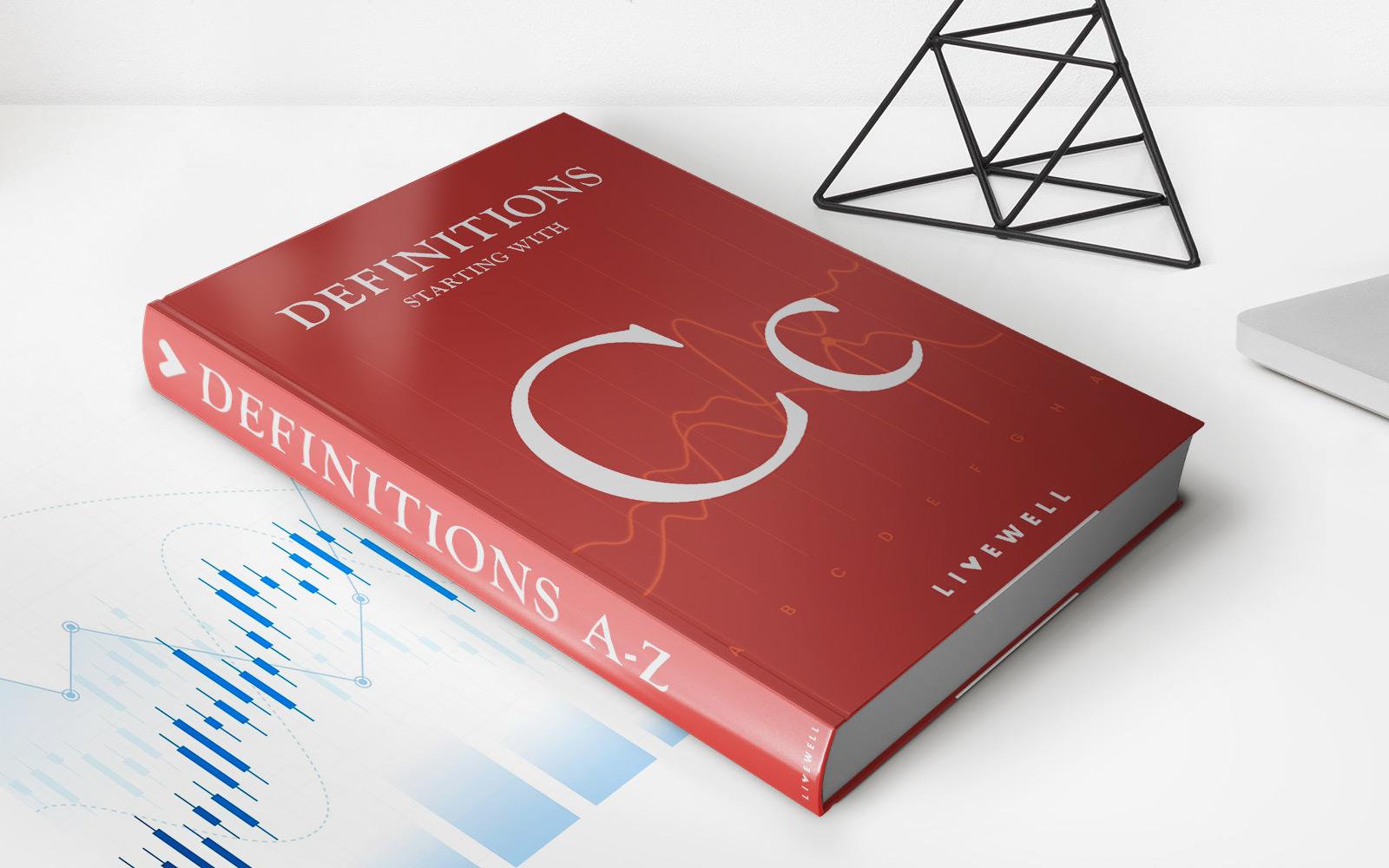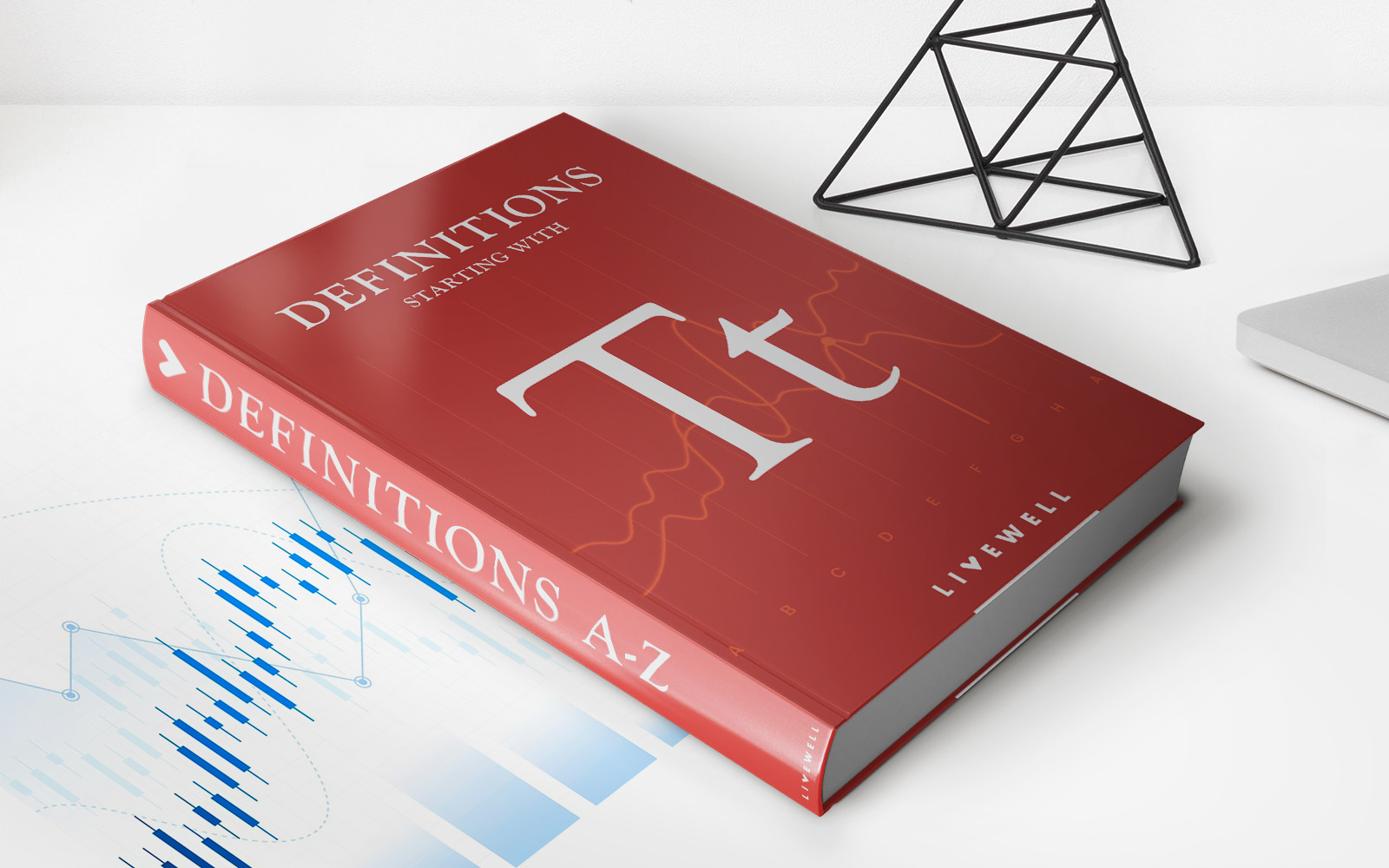Home>Finance>What Is A Conversion Period In A Life Insurance Policy?


Finance
What Is A Conversion Period In A Life Insurance Policy?
Published: October 15, 2023
Learn what a conversion period is in a life insurance policy and how it can impact your financial planning. Get expert insights and advice in this comprehensive guide on finance.
(Many of the links in this article redirect to a specific reviewed product. Your purchase of these products through affiliate links helps to generate commission for LiveWell, at no extra cost. Learn more)
Table of Contents
Introduction
When it comes to life insurance, there are various terms and conditions that one needs to understand. One such important aspect is the conversion period. This period holds great significance for policyholders as it provides them with the flexibility to convert their existing life insurance policy into a different type of policy without undergoing medical underwriting or providing evidence of insurability. Understanding the conversion period and its implications can help policyholders make informed decisions about their life insurance coverage.
In simple terms, the conversion period is a specific timeframe during which policyholders have the option to convert their current life insurance policy into a different type of policy offered by the same insurance company. This is a valuable feature as it allows individuals to adjust their coverage to meet their changing needs over time.
During the conversion period, policyholders can convert their policy into a new one that offers different features, benefits, and premium rates. This can be particularly useful if one’s circumstances change or if their insurance needs increase or decrease. For example, if a policyholder initially opted for a term life insurance policy but later realizes the need for permanent coverage, they can take advantage of the conversion period to convert their policy.
The duration of the conversion period can vary depending on the insurance company and the specific policy taken out. Typically, the conversion period ranges from one to ten years, although some policies may offer longer periods. It is important to be aware of the specific conversion period mentioned in the policy contract and to take action within that timeframe if conversion is desired.
Next, let’s delve deeper into the definition, purpose, eligibility, and options available during the conversion period for life insurance policies.
Definition of Conversion Period
The conversion period is a specific timeframe provided by an insurance company during which policyholders have the option to convert their existing life insurance policy into a different type of policy offered by the same company, without the need for medical underwriting or evidence of insurability. It is essentially a window of opportunity for policyholders to make changes to their coverage to better suit their evolving needs.
During the conversion period, policyholders have the flexibility to switch from a term life insurance policy to a permanent one, or vice versa. They can convert their policy without being subject to the usual requirements, such as undergoing a new medical examination or submitting additional documentation to prove their insurability. This feature is particularly beneficial for individuals who may have experienced changes in their health or lifestyle since obtaining their original policy and want to secure a different type of coverage.
The duration of the conversion period may vary depending on the insurance company and the specific policy. It can range from as little as one year to as long as ten years, although some policies may offer even longer conversion periods. It is crucial for policyholders to be aware of the specific duration mentioned in their policy contract and take action within that timeframe if they wish to convert their policy.
It is important to note that the conversion period is not a guarantee of approval for a new policy. While the conversion feature allows policyholders to avoid the usual underwriting process, the new policy will still be subject to the terms and conditions set by the insurance company. This means that the policyholder may need to meet certain eligibility criteria and could potentially face higher premiums based on their age, health conditions, and other factors at the time of conversion.
Overall, the conversion period is a valuable provision within a life insurance policy that gives policyholders the opportunity to adapt their coverage to better align with their changing circumstances. It offers flexibility and convenience, allowing individuals to convert their policy without the hassle of additional medical exams or providing evidence of insurability.
Purpose and Importance of Conversion Period
The conversion period serves a crucial purpose in life insurance policies and holds great importance for policyholders. It offers several benefits and advantages that can greatly impact the individual’s insurance coverage and financial security. Let’s explore the purpose and importance of the conversion period in more detail.
Flexibility to Adapt Coverage: The primary purpose of the conversion period is to provide policyholders with the flexibility to adapt their life insurance coverage to their changing needs. Life is unpredictable, and circumstances can evolve over time. The conversion period allows policyholders to modify their policy to better align with their current situation, ensuring that their coverage remains adequate and relevant.
No Underwriting or Evidence of Insurability: One of the key advantages of the conversion period is that policyholders can convert their policy without the need for medical underwriting or providing evidence of insurability. This is particularly beneficial for individuals who may have experienced changes in their health or lifestyle since obtaining their original policy. It allows them to secure a new policy without worrying about potential rejections or higher premiums due to their current health conditions.
Seamless Transition: The conversion period enables policyholders to transition smoothly from one type of life insurance policy to another within the same insurance company. This eliminates the need to search for a new insurer or go through the application process all over again. It simplifies the process and ensures a seamless transition between policies.
Preservation of Insurability: As individuals age, the risk of developing health issues increases. By taking advantage of the conversion period, policyholders can lock in their insurability while they are still young and healthy. This becomes particularly valuable if a policyholder’s health deteriorates or they develop a medical condition that would make it difficult to obtain a new policy later on.
Long-Term Financial Planning: Life insurance is a critical component of long-term financial planning. The conversion period allows policyholders to reassess their coverage and make adjustments to ensure their insurance aligns with their overall financial strategy. They can switch from a term policy to a permanent one, which may offer additional benefits such as cash value accumulation or lifelong coverage.
Retaining Discounts and Benefits: If a policyholder qualifies for certain discounts or benefits under their original life insurance policy, the conversion period allows them to retain those advantages when converting to a new policy. This can help policyholders save money and maintain valuable features provided by the insurance company.
In summary, the conversion period plays a critical role in providing policyholders with the flexibility to adapt their life insurance coverage as their needs change. It eliminates the need for further underwriting and allows for a smooth transition between policies, ensuring financial security and peace of mind for policyholders and their loved ones.
Eligibility for Conversion Period
The eligibility criteria for the conversion period vary depending on the insurance company and the specific policy. While most life insurance policies offer a conversion provision, it is crucial for policyholders to review their policy contract to understand the specific requirements and conditions regarding eligibility for the conversion period.
In general, policyholders are eligible for the conversion period if they meet the following criteria:
- Active Policy: The policy must be active and in-force during the conversion period. If the policy has expired, lapsed, or been surrendered, the conversion option may no longer be available.
- Specific Timeframe: The policyholder must initiate the conversion process within the designated conversion period mentioned in the policy contract. It is essential to be aware of the exact duration of the conversion period and take action before it expires.
- Same Insurance Company: The conversion option is typically available only within the same insurance company that issued the original policy. Policyholders cannot convert their policy to a different insurer’s policy.
- Type of Policy: The conversion eligibility may vary based on the type of policy being converted. For example, a term life insurance policy may have different conversion options compared to a permanent life insurance policy.
It is important to note that the conversion option may come with certain limitations and restrictions that can affect eligibility. Some policies may specify that only certain types of policies are eligible for conversion, or there might be limitations on the amount of coverage that can be converted. Additionally, there may be restrictions on the age or health status of the policyholder at the time of conversion.
While most policies offer conversion privileges without requiring evidence of insurability or additional underwriting, it is important to clarify the terms regarding the new policy’s acceptance. The new policy may still be subject to underwriting based on the policyholder’s age and health at the time of conversion. This means that while the conversion option grants policyholders the ability to convert without proving insurability, they might still face potential limitations or changes in premium rates for the future policy.
Prior to making any decisions or taking action during the conversion period, it is highly recommended that policyholders consult with their insurance advisor or directly contact the insurance company for detailed information on eligibility requirements and any associated costs or limitations.
Understanding the eligibility criteria for the conversion period is essential to determine whether one qualifies for the conversion option and is in a position to benefit from making changes to their life insurance coverage.
Conversion Options during Conversion Period
During the conversion period, policyholders have various options available to them when converting their existing life insurance policy. The specific conversion options may vary depending on the insurance company and the type of policy being converted. Here are some common conversion options that policyholders may consider:
- Term to Permanent: One common conversion option is to convert from a term life insurance policy to a permanent life insurance policy. This allows policyholders to transition from a policy with a specific term (such as 10, 20, or 30 years) to one that offers lifetime coverage. Permanent life insurance often includes additional benefits, such as cash value accumulation and the potential for dividends.
- Permanent to Term: Policyholders who initially purchased a permanent life insurance policy may choose to convert to a term life insurance policy during the conversion period. This conversion option can be beneficial for individuals who no longer require lifelong coverage or want to reduce their premiums.
- Policy Enhancements: Depending on the insurance company, policyholders may have the option to enhance their coverage during the conversion period. This may involve adding additional riders or benefits to the new policy, such as disability income riders, long-term care riders, or accelerated death benefit riders. These enhancements can provide added protection and tailored coverage based on the policyholder’s specific needs.
- Adjustment of Coverage Amount: The conversion period also allows policyholders to adjust their coverage amount when converting their policy. They can increase or decrease the death benefit amount to better align with their current needs. This flexibility can be valuable if circumstances have changed since the original policy was purchased.
- Conversion of Group Policies: In some cases, group life insurance policies may also offer a conversion option. This allows individuals covered under a group policy (such as through an employer) to convert their coverage to an individual policy upon leaving the group. This ensures continued coverage and the ability to tailor the policy to personal needs.
It is essential for policyholders to carefully review the terms and conditions outlined in their policy contract to understand the specific conversion options available to them. Taking the time to assess their current needs and consulting with their insurance advisor can help policyholders determine the most suitable conversion option.
It is worth mentioning that the conversion option typically comes with certain restrictions and limitations. These may include a time limit for exercising the conversion option, specific requirements for the new policy, and potential adjustments to premium rates based on the policyholder’s age and health at the time of conversion. Understanding these nuances can assist policyholders in making well-informed choices when converting their life insurance policy.
Ultimately, the conversion period provides policyholders with the opportunity to adjust their coverage and tailor their life insurance policy to better suit their evolving needs. Choosing the right conversion option can help ensure that their insurance coverage continues to provide adequate protection and peace of mind.
Limitations and Restrictions during Conversion Period
While the conversion period offers valuable flexibility to policyholders, it is important to be aware of the limitations and restrictions that may apply during this timeframe. Understanding these limitations can help policyholders make informed decisions and set realistic expectations when considering a conversion. Here are some common limitations and restrictions during the conversion period:
- Specific Conversion Window: The conversion period has a defined timeframe within which policyholders must initiate the conversion process. It is crucial to be aware of this window and take necessary action within the specified period. Failure to do so may result in the loss of the conversion option.
- Eligible Policy Types: The conversion option may only be available for certain types of life insurance policies offered by the insurance company. Policyholders may be limited to converting their policy to specific options, such as converting a term policy to a permanent policy or vice versa. Not all policies may be eligible for conversion.
- Conversion Without Additional Underwriting: While the conversion period allows policyholders to convert without undergoing additional medical underwriting or providing evidence of insurability, certain limitations may still apply. The new policy may be subject to underwriting based on the policyholder’s age and health at the time of conversion, which could potentially impact premium rates.
- Restricted Conversion Amount: Some policies may impose restrictions on the maximum conversion amount. This means that policyholders may only be able to convert a portion of their existing coverage rather than the full amount. It is important to review the policy contract to understand any limitations on the conversion amount.
- Age and Health Restrictions: The eligibility for conversion may be limited based on the policyholder’s age and health conditions. Some policies may have specific age ranges within which conversion is allowed, while others may impose restrictions based on certain health criteria. It is crucial to review the policy contract to determine any age or health-related limitations.
- Policy Changes and Adjustments: When converting a policy, there may be certain restrictions on making additional changes or adjustments to the new policy. Policyholders should carefully consider their desired coverage and any accompanying riders or benefits during the conversion period, as future modifications may be subject to separate approval or underwriting.
It is important for policyholders to thoroughly review their policy contract and consult with their insurance advisor to fully understand the limitations and restrictions that may apply during the conversion period. By being informed about these factors, policyholders can make well-informed decisions and avoid any surprises or misunderstandings during the conversion process.
Being aware of the limitations and restrictions can help policyholders set realistic expectations and ensure a smooth conversion experience, ultimately allowing them to make the most of the available conversion option and tailor their life insurance coverage to their evolving needs.
Comparison of Conversion Periods between Life Insurance Policies
When it comes to life insurance policies, the duration of the conversion period can vary between different insurance companies and policies. Understanding the differences in conversion periods can be crucial for choosing the right policy that aligns with your long-term needs. Let’s explore the key factors to consider when comparing conversion periods:
- Conversion Period Duration: The length of the conversion period varies significantly across different policies. Some policies may offer a conversion period as short as one year, while others may provide a more extended period of up to ten years. It is essential to review the policy contract to determine the specific duration of the conversion period.
- Flexibility within the Conversion Period: Some policies may offer more flexibility during the conversion period, allowing policyholders to convert to a wider range of policy options or make adjustments to coverage amounts. The level of flexibility offered during the conversion period can impact the policyholder’s ability to tailor their coverage according to their changing needs.
- Eligibility Requirements: The eligibility criteria to exercise the conversion option may vary between policies. Some policies may have more lenient requirements, allowing conversion regardless of age or health conditions. Others may impose restrictions based on specific age ranges or health criteria. It is important to carefully review the eligibility requirements to ensure that you qualify for the conversion option.
- Premium Adjustments: During the conversion process, premium rates may be adjusted based on the policyholder’s age and health at the time of conversion. It is crucial to understand how the conversion may impact the premium rates of the new policy. Comparing the premium adjustments between different policies can help you make an informed decision.
- Conversion Flexibility: Some policies may offer the flexibility to convert multiple times during the conversion period, allowing policyholders to adjust their coverage as needed. Others may restrict conversions to a single opportunity within the designated period. Understanding the conversion flexibility can be valuable if you anticipate the need to make changes to your policy more than once.
- Additional Conversion Costs: While the conversion option may be available without further underwriting, some policies may impose additional costs or fees for exercising the conversion privilege. It is essential to consider any associated costs when comparing conversion periods between different policies.
When comparing conversion periods between life insurance policies, consider your specific needs and preferences. Evaluate the duration, flexibility, eligibility requirements, premium adjustments, conversion flexibility, and any additional costs associated with the conversion option. By comparing these factors, you can identify the policy that offers the most suitable conversion period aligned with your long-term objectives.
It is recommended to consult with an insurance advisor who can guide you through the comparison process and help you choose the policy that best meets your evolving needs.
Conclusion
The conversion period is a valuable feature within life insurance policies that provides policyholders with the flexibility to adapt their coverage to meet changing needs. It allows policyholders to convert their existing policy into a different type of policy offered by the same insurance company without undergoing medical underwriting or providing evidence of insurability.
Understanding the conversion period is crucial for policyholders as it enables them to make informed decisions about their life insurance coverage. It offers several benefits, including the ability to adjust coverage, preserve insurability, and simplify the transition between policies.
While the conversion period presents advantages, it is important to be aware of its limitations and restrictions. These may include a specific conversion window, eligibility requirements, restrictions on eligible policy types and conversion amounts, and potential adjustments to premium rates.
When comparing conversion periods between different life insurance policies, factors such as duration, flexibility, eligibility requirements, premium adjustments, conversion flexibility, and additional costs should be considered. This comparison allows policyholders to determine the best policy that aligns with their long-term objectives and provides the most favorable conversion options.
In conclusion, understanding the conversion period and its implications empowers policyholders to make informed choices and ensure that their life insurance coverage remains relevant and suitable over time. It is recommended to review the policy contract and consult with an insurance advisor to fully grasp the conversion options available and make decisions that best suit individual circumstances.














